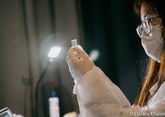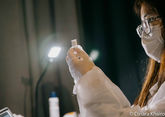A study by scientists from the University of Southampton has examined the chances of getting COVID-19 in a train carriage carrying an infectious person.
Based on high-speed routes in China, researchers from WorldPop found that for train passengers sitting within three rows and five columns of an infected person between 0 and 10% (10.3) caught the disease. The average rate of transmission for these 'close contact' travellers was 0.32%.
The study, in collaboration with the Chinese Academy of Sciences, China Academy of Electronics and Information Technology, and Chinese Centre for Disease Control and Prevention, also showed that passengers travelling in seats directly adjacent to an index patient suffered the highest level of transmission, with an average of 3.5% contracting the disease. For those sitting on the same row, the figure was 1.5%.
The 'attack rate' for each seat - the number of passengers in a given seat diagnosed with COVID-19, divided by the total number of passengers travelling in the same seat - increased by 0.15% for every hour that a person travelled with an index patient. For those in adjacent seats, this rate of increase was higher at 1.3% per hour.
Interestingly, the researchers found that only 0.075% of people who used a seat previously occupied by an index patient went on to contract the disease, News Wise reported.
The WorldPop team, experts in population mapping, used sophisticated modelling to analyse anonymised itinerary and infection data relating to train passengers on China's high-speed G train network. This included those who had COVID-19 at the time of travel and their close contacts (who showed symptoms within 14 days of travel). The data, covering a period between 19 December 2019 and 6 March 2020, included 2,334 index patients and 72,093 close contacts. Their travel times ranged from between less than an hour to eight hours.
The researchers conclude that given the attack rates estimated for passengers in the same row as an index patient, a safe social distance of more than one metre is required for one hour spent travelling together. After two hours of contact, they consider a distance of less than 2.5 metres may be insufficient to prevent transmission.










